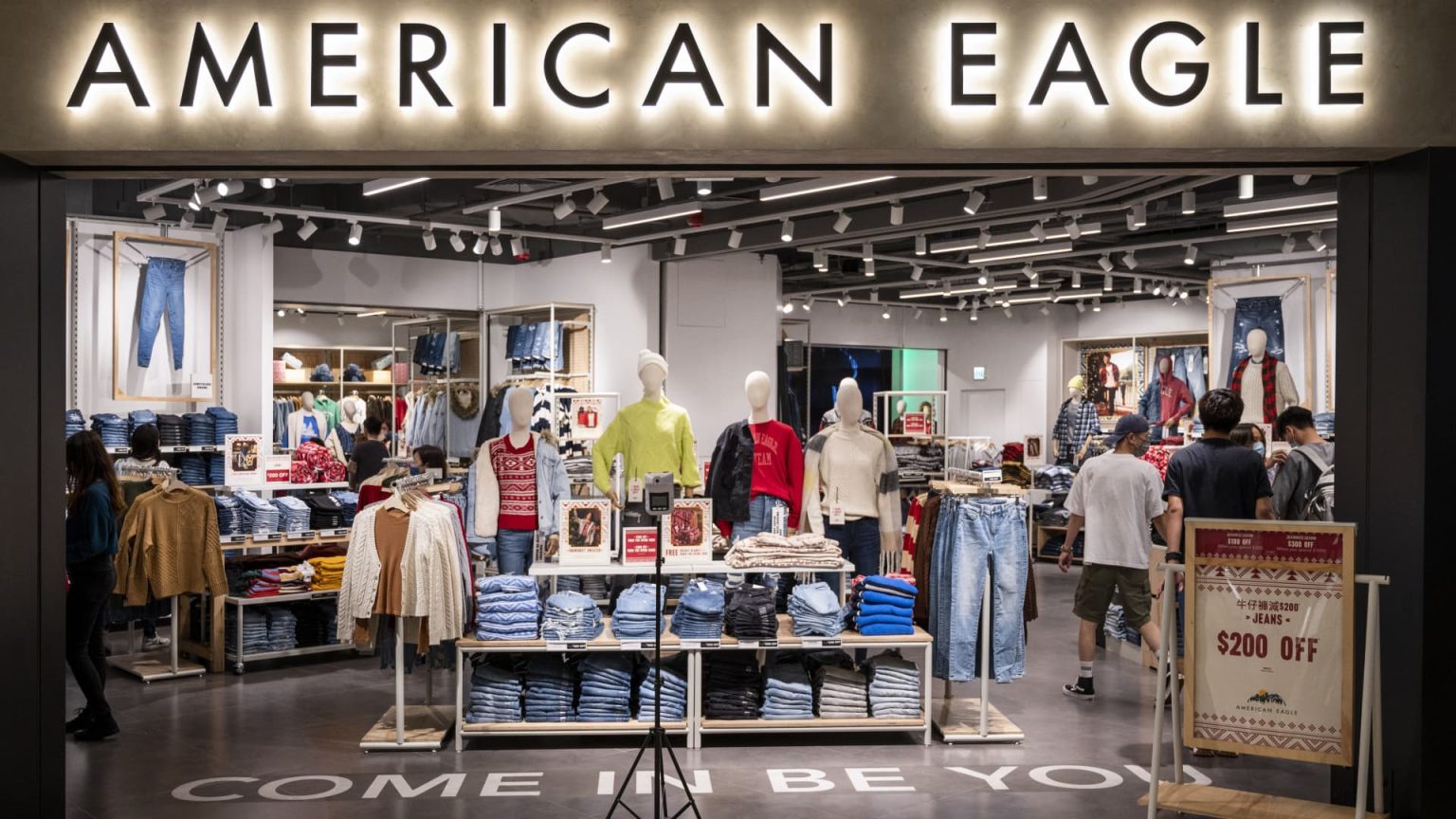Shares of American Eagle, known for its trendy apparel and accessories, fell approximately 5% in extended trading on Wednesday after the company warned investors of a slower-than-anticipated financial start to 2025. CEO Jay Schottenstein cited muted consumer demand and unfavorable weather conditions impacting sales. This news aligns with a broader trend observed among retailers who are grappling with diminishing consumer confidence amid inflation concerns and tariffs, suggesting a potential downturn in retail sales this year.
| Article Subheadings |
|---|
| 1) American Eagle’s Disappointing Forecast |
| 2) Mixed Financial Results |
| 3) Impact of Tariffs on Operations |
| 4) The Changing Retail Landscape |
| 5) Economic Concerns Affecting Consumers |
American Eagle’s Disappointing Forecast
In a recent announcement, American Eagle revealed a cautious outlook for the upcoming quarter. CEO Jay Schottenstein noted that the first quarter of 2025 is off to a slower start than anticipated, largely due to decreased consumer spending and unfavorable weather conditions. He explained that despite expectations for improvement as spring arrives, the company is proactively adjusting its strategies to manage inventory and cut costs in light of an uncertain economic landscape. This acknowledgment of potential challenges reflects growing concerns over consumer behavior, which appears to be shifting as shoppers become increasingly wary of spending.
Mixed Financial Results
American Eagle’s fiscal fourth quarter results displayed a mixed bag. While the company reported earnings of 54 cents per share, surpassing Wall Street estimates of 50 cents, overall revenue remained static at $1.60 billion, aligning with expectations but not indicating growth. The reported net income of $104 million for the quarter marked a significant improvement from the previous year’s earnings of $6.31 million. However, there was a slight decline in sales from $1.68 billion a year earlier, reflecting challenges faced in maintaining growth levels. Comparable sales increased by 3%, slightly exceeding analyst expectations, but overall, the numbers suggest that while the company is profitable, it is struggling to grow in a competitive environment.
Impact of Tariffs on Operations
The current geopolitical landscape has further complicated American Eagle’s operations as the company faces looming tariffs. Chief Financial Officer Michael Mathias reported that roughly 20% of the company’s products are sourced from China, with the potential for a $5 million to $10 million impact from new duties expected in fiscal 2025. This situation represents a significant hurdle for American Eagle, especially as Mathias indicated that the company has no immediate plans to pass these costs onto consumers. Instead, American Eagle is looking to reduce its reliance on Chinese goods, aiming to decrease that percentage to under 10% by the end of the fiscal year.
The Changing Retail Landscape
Given the state of retail, American Eagle finds itself at a crossroads, with shifting consumer shopping habits leading to challenges for established brands. The company still has a substantial presence in malls, which have seen significant traffic declines, impacting overall sales figures. This is evident as American Eagle explores ways to remodel its existing stores—most of which are around 12 years old—in hopes of improving customer engagement. For fiscal 2024, the company plans to remodel 90 to 100 stores as part of a $300 million capital expenditure plan, indicating a commitment to modernizing its customer interaction points and addressing the evolving retail landscape.
Economic Concerns Affecting Consumers
The backdrop of economic uncertainty plays a crucial role in shaping consumer behavior. Recent financial indicators suggest a decline in consumer confidence, with the most significant drop observed since 2021. Job growth has also slowed and unemployment rates have ticked upwards, signaling potential recession concerns. Jay Schottenstein emphasized that consumer trepidation is influenced not just by tariffs and inflation but also by broader economic uncertainties. Customers have expressed a lack of clarity about future government programs and their implications for personal finances, leading to more conservative spending patterns that could affect retail sales throughout the year.
| No. | Key Points |
|---|---|
| 1 | American Eagle experienced a significant fall in share prices following a disappointing earnings forecast. |
| 2 | Despite surprising earnings per share, revenue remained stagnant, highlighting difficulties in witnessing sales growth. |
| 3 | Tariff impacts are expected to challenge profitability and result in adjustments to sourcing strategies. |
| 4 | The retail landscape is evolving, with American Eagle adapting through store remodeling to enhance customer engagement. |
| 5 | Consumer confidence is waning amidst economic concerns, leading to conservative spending behaviors. |
Summary
The recent financial disclosures from American Eagle underscore the complex interplay of economic factors impacting consumer behavior and retail operations. With declining foot traffic in malls, increased sourcing costs from tariffs, and an overarching sense of uncertainty among consumers, American Eagle is at a critical juncture as it navigates this challenging landscape. Emphasizing a commitment to long-term strategic goals while reacting to immediate challenges, the company’s approach will be closely monitored by investors and industry analysts alike.
Frequently Asked Questions
Question: What factors contributed to American Eagle’s disappointing forecast?
Consumer spending has slowed down, coupled with adverse weather conditions that hinder sales during the crucial early part of the year.
Question: How did American Eagle perform financially in the past quarter?
American Eagle reported earnings of 54 cents per share, exceeding estimates, but overall revenue remained flat at $1.60 billion, indicating challenges in maintaining sales growth.
Question: What strategies is American Eagle implementing to address its challenges?
The company is focusing on reducing inventory and expenses, remodeling stores to attract customers, and decreasing its reliance on Chinese sourcing to mitigate tariff impacts.


